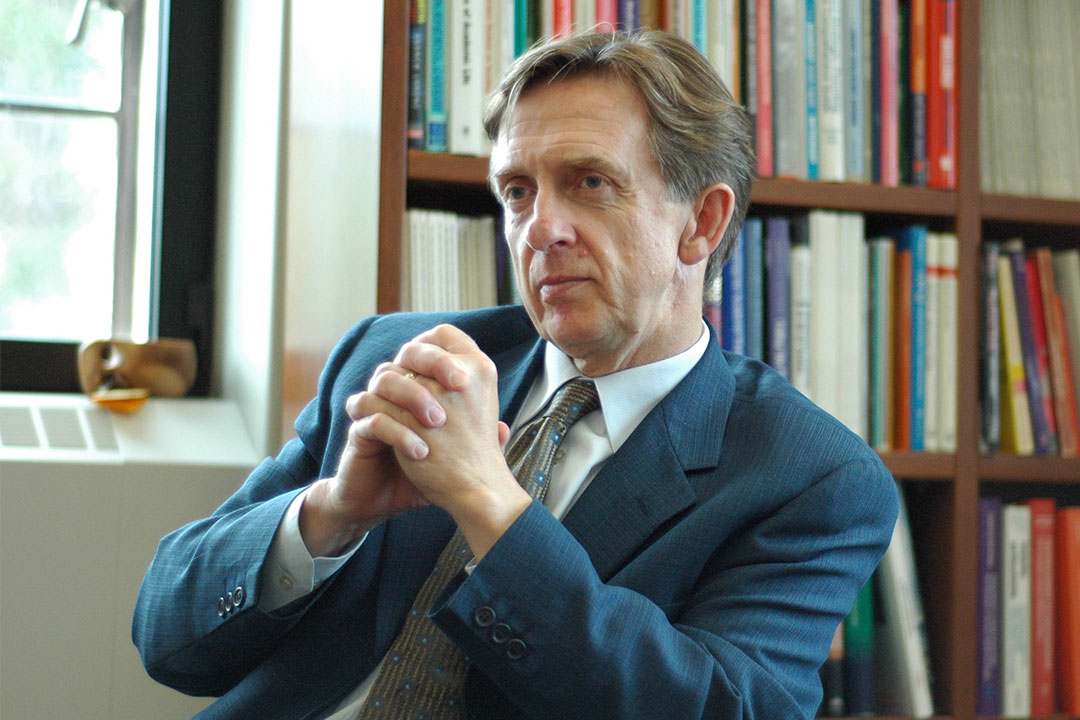
University dealing with difficult provincial budget
The University of Saskatchewan is facing the largest percentage cut in provincial funding in the institution’s 110-year history.
By James ShewagaWhile university administration had been preparing for a likely reduction in its 2017-18 operating funding in the March 22 provincial budget, the magnitude of an unprecedented 5.6 per cent cut for the U of S—amounting to close to $18 million—was eerily close to a worst case scenario.
However, U of S President Peter Stoicheff said the budget cuts will not define the university or keep it from moving forward as a member of the group of U15 research institutions in the country.
“This will be damaging, but we will manage the potential impacts this has on our campus community—our students, faculty and staff,” Stoicheff stated. “We will need time to figure this out, but as we always have, we will find a way to stay the course.”
Dealing with the larger than expected budget cut will present significant challenges for the university. But Interim Provost and Vice-President Academic Michael Atkinson said the Provost’s Committee on Integrated Planning is moving forward with a plan to present to the Board of Governors at the next meeting in June to reduce budget allocations across campus, while also asking to run a deficit for 2017-18.
“The reduction to all post-secondary institutions is substantial, even relative to the reductions of other parts of the provincial budget,” said Atkinson, noting that the province has also withheld an annual $20 million provincial commitment to the College of Medicine that the university will again have to cover from its base funding. “But because of the scenario-building that we had done, we had prepared for what turned out to be a worst-case scenario. This budget is unwelcome in the extreme and will force painful reductions to our activities, but it will not take us off the path that we are on.”
Atkinson also addressed concerns on campus about potential workforce reductions, program changes or tuition increases, as a result of the budget cuts. While the board ultimately makes final decisions regarding tuition, Atkinson said the university will not be recommending any additional increases for the 2017-18 academic year.
Atkinson is also not anticipating short-term academic program cuts, since the university is committed to a long-term approach to planning.
“Academic programs are council’s decision and typically those changes to academic programs are not real money savers,” he said. “They really are, and should be, responsive to academic needs and demands and to changes in disciplines, rather than short-term financial decisions. So I don’t see immediate changes to existing programs.”
Atkinson also emphasized that workforce changes, in particular layoffs, will be a last-case scenario, although it’s possible that some colleges, schools and units may elect to temporarily not fill some vacancies as one way to deal with the shortfall. “Involuntary layoffs, for example, are not our first choice, by any means,” he said. “And if we can find ways in which we can reduce our overall workforce by other methods, then we will choose to do that and only laterally will we be looking for other kinds of solutions.”
While the university is actively exploring alternative revenue sources and cost-saving measures on campus, college and school allocations will be reduced by an average of five per cent, using the Transparent Activity-Based Budget System (TABBS) of linking resources to strategic priorities. The colleges of Agriculture and Bioresources (11 per cent) as well as Engineering (9.6 per cent) will face the largest cuts, although Atkinson said their reserves will help to somewhat cushion the blow.
University support units, which have had significant cuts in recent years, will face further reductions averaging three per cent.
The funding cut follows a recent economic impact study that confirmed the U of S contributes close to $1.3 billion—or about 1.6 per cent—to Saskatchewan’s economy each year. That regularly ranks the U of S as one of the top two universities out of 97 in the country, in terms of economic impact in our region.
“Our university is a major economic driver in Saskatchewan and contributes more economic benefit to its region than almost any other university in the entire country,” Stoicheff stated. “Continued reductions to our university will jeopardize the long-term economic future of our province.”

